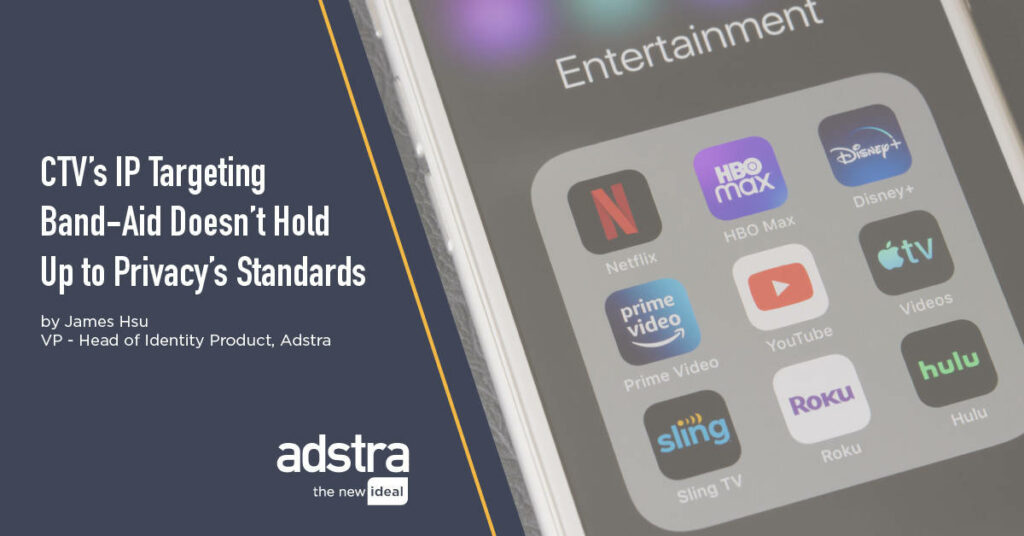By James Hsu, VP – Head of Identity Product, Adstra

The advertising world has been focused on the transition away from cookies as identifiers for the past several years. When a global pandemic hit in 2020, two important things happened in the media world. The cookie received a temporary stay of execution, giving advertisers more time to work out their potential replacements and post-cookie solutions. At the same time, CTV adoption skyrocketed, bringing the media world into a digitally-focused TV era much faster than anyone anticipated.
Advertisers rushed into CTV, seeking an identifier that will let them target and measure CTV advertising along the same lines with what they’ve done in digital advertising for decades. Of course, there is no cookie in the TV environment, and even then, the cookie advertisers have used for decades is fading out. Advertisers need another solution.
The IP address has emerged as a preferred matching, targeting, and measurement option among many advertisers, but alas, it’s an incomplete, fraught, and ultimately unsustainable choice. IP passback in CTV is band-aid at best, and if left in place too long could result in a long-term wound to the overall advertising space.
Brands exploring identity solutions for CTV advertising need to familiarize themselves with the limitations and possible future solutions.
IPv6 is Not the Solution
The true challenge with using IP addresses is in connecting those IP addresses to other pieces of customer information so that brands, publishers, and ad tech platforms can correlate ad exposure to campaign success.
Many publishers with content or apps on cookieless browsers or mobile / CTV devices with missing advertising IDs are turning to IP based identification of their customers. With the increasing adoption of IPv6, we are seeing these publishers ask data and identity partners to have IPv6 assets in order for them to connect to the publisher’s users.
This sounds like a natural way to approach a problem, but it’s important to understand what the problem actually is. The publisher’s need for IPv6 is a direct result of browsers or apps not having access to consented advertising IDs or a 3rd party cookies. What the ad tech industry needs to address is how do you identify a user when 3rd party cookies or device advertising IDs are missing, not trying to solve the problem by hoarding IPv6.
IDs, not IPs
If we look at the cross-channel matching as a cookie an ID less problem, not an IP problem, then it’s easier to see a path forward. There is a rise of advertising IDs that are applicable in the CTV space, and these consented IDs were created for the purpose of allowing opt-outs. The U.S. market is moving more toward a model where users are asked if they are willing to share data in order to see personalized advertising. As a result, they opt in to an identifier.
All the major CTV platforms have these IDs right now. If or when consumers opt-out, the consent string is passed along with the ID to all downstream platforms. It’s understood by all parties that the ID is either opted out or no longer tracked.
There is no way to make an IP address fit this mechanism. For one, households cannot opt-out of an IP address. Second, an IP address is not mutable. It is a static ID, and that prohibits it from providing the kind of functionality that advertisers are looking for.
A more reliable stop gap right now might be the hashed email. When consumers consensually share an email, it allows brands and broadcasters to match that email against their other data. While this method of identifying users is available right now, many apps do not require an email so they still need other methods of identification.
Pulling off the band-aid
There is certainly some utility in using IP addresses as an identifier right now, but this is not a sustainable long-term solution. At some point very soon, the entire CTV ecosystem needs to move toward one (or many) universally recognized form of ID that can be used across all forms of advertising.




